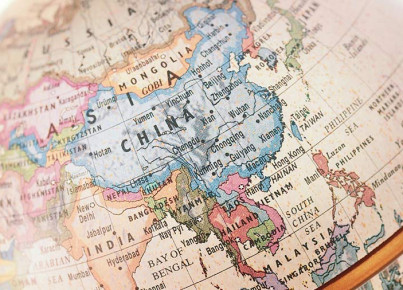The signing of the free trade agreement, expected by the end of 2020, could boost confidence in international cooperation
The idea of giving life to a mega regional trade agreement emerged, capable of bringing together almost all the actors in East Asia, emerged in 2012. The ASEAN members gathered at the 21st ASEAN summit in Cambodia outlined at the time a strategy based on commercial convergence to be adopted in the years to come, and which would end up with the negotiation of the Regional Comprehensive Economic Partnership (RCEP), a free trade agreement of massive dimensions and global importance, which is expected to be concluded by the end of 2020.
Initially 16 nations were supposed to take part in the deal, but India decided to abandon the project due to conditions relating to the progressive reduction of customs tariffs. According to the Indian authorities, the new rules would have made the access to the domestic market for items of Chinese and Australian origin much easier, damaging local producers and leading to considerable economic imbalances. Thus, the adhering nations have been reduced to the 10 ASEAN members (Brunei, Cambodia, Indonesia, Laos, Malaysia, Burma, Philippines, Singapore, Thailand and Vietnam) plus China, Japan, South Korea, Australia and New Zealand.
Despite New Delhi’s bail out, the RCEP is set to become the largest free trade agreement in the world. Indeed, the 15 participants of the partnership are among the major developing countries and they cover collectively about 30% of the world's GDP and population. At the same time, the RCEP is arranged as a broad and comprehensive agreement, capable of observing the different facets of economic action, including forms of cooperation between members and dispute resolution mechanisms in addition to mere commercial provisions. It aims, on one hand, to incorporate the commitments established by the World Trade Organization (WTO) for a deeper reduction of tariff barriers and, on the other, to integrate provisions beyond the WTO, expected to address other regulatory issues. Among these, are to be mentioned the chapters dedicated to small and medium-sized enterprises, e-commerce, dispute resolution mechanisms, intellectual property and the definition of procedures for interstate economic and technical cooperation.
From a political-economic point of view, the RCEP has all the potential to become a reference for commercial standards related to new free trade agreements in Asia and beyond. It is going to set a legal precedent for future regional and international relations. Beyond numbers and statistics, the conclusion of an agreement of this extent occurs at a crucial moment for global economic governance, in which multilateralism is increasingly giving way to nationalists and, occasionally, unilateral policies. The economic recession caused by the Covid-19 pandemic has, indeed, consolidated a trend that has shown itself to be growing in recent years, especially with regard to the United States, a still dominant player on the world scene. Just as the Trump presidency erects tariff barriers and reduces foreign trade in the name of "America First", part of the Asian continent is moving in a different direction, in support of multilateralism in line with an international economic order based on precise rules.
Con la ratifica del RCEP, in aggiunta al Comprehensive and Progressive Agreement for Trans-Pacific Partnership, l’Asia orientale potrà fare affidamento su due giganteschi accordi commerciali che hanno il pregio di promuovere l’integrazione e la stabilità regionale e di rafforzare la centralità dell’ASEAN, tanto nell’Indopacifico, quanto nel panorama internazionale. Tali accordi combinati plasmeranno il più grande blocco commerciale del mondo, coprendo più di un terzo del PIL globale, e contribuendo a questo per circa 137 miliardi di dollari USA nel lungo periodo.
Nel contesto delle controversie commerciali tra Stati Uniti e Cina, il RCEP invia un forte segnale al mondo, manifestando a gran voce la volontà di apertura del continente asiatico. Non a caso, dopo la crisi finanziaria del 1997, la risposta dell’ASEAN alle turbolenze politiche e monetarie è stata quella di raddoppiare i suoi sforzi per un’integrazione economica sempre più inclusiva. La conseguenza finale potrebbe essere uno slittamento degli equilibri mondiali a favore dell’emisfero asiatico, rendendo il RCEP un’importante opportunità di cooperazione con Paesi finora ritenuti quasi secondari e un’occasione di ristabilire la fiducia collettiva nonostante la crescente instabilità del sistema globale.
By Emilia Leban






